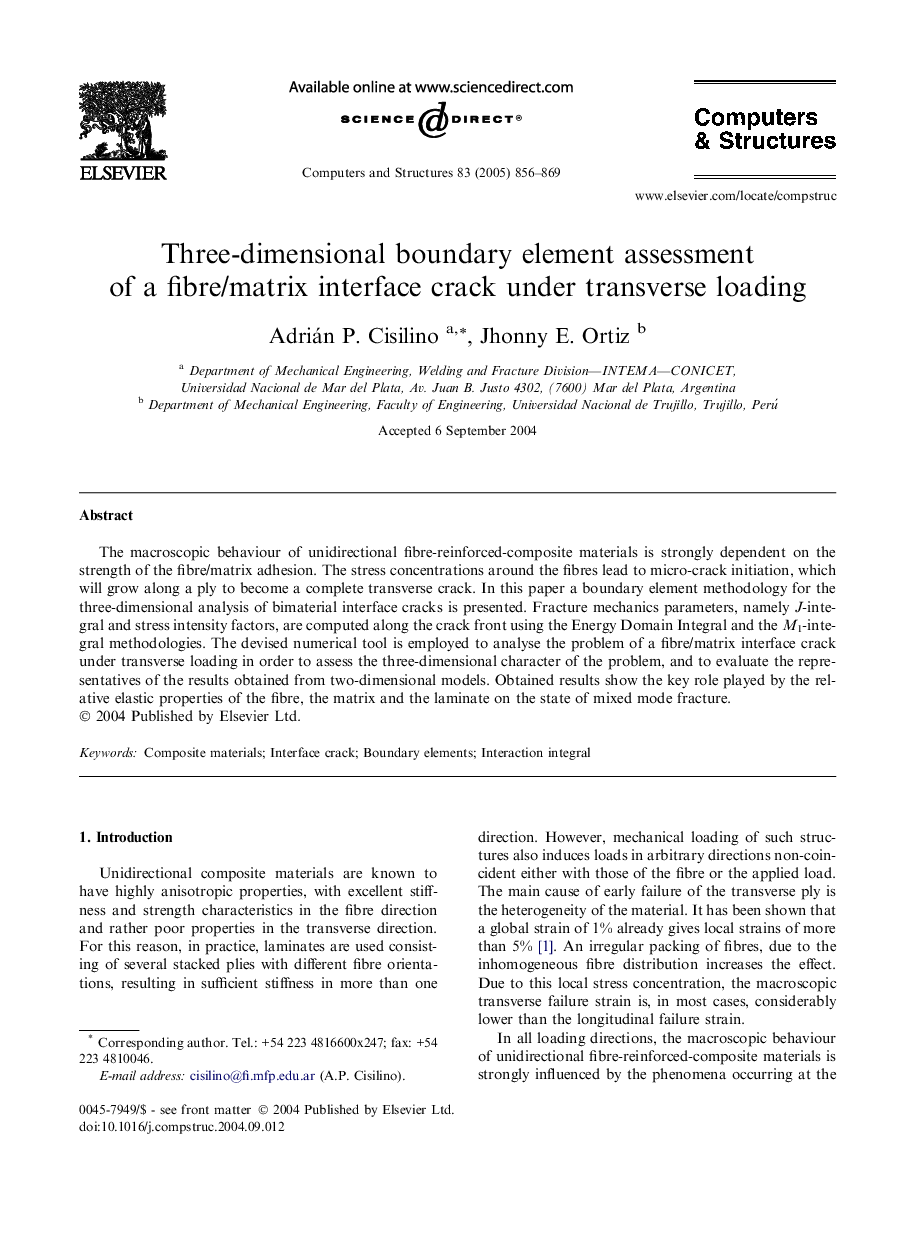| Article ID | Journal | Published Year | Pages | File Type |
|---|---|---|---|---|
| 9668216 | Computers & Structures | 2005 | 14 Pages |
Abstract
The macroscopic behaviour of unidirectional fibre-reinforced-composite materials is strongly dependent on the strength of the fibre/matrix adhesion. The stress concentrations around the fibres lead to micro-crack initiation, which will grow along a ply to become a complete transverse crack. In this paper a boundary element methodology for the three-dimensional analysis of bimaterial interface cracks is presented. Fracture mechanics parameters, namely J-integral and stress intensity factors, are computed along the crack front using the Energy Domain Integral and the M1-integral methodologies. The devised numerical tool is employed to analyse the problem of a fibre/matrix interface crack under transverse loading in order to assess the three-dimensional character of the problem, and to evaluate the representatives of the results obtained from two-dimensional models. Obtained results show the key role played by the relative elastic properties of the fibre, the matrix and the laminate on the state of mixed mode fracture.
Related Topics
Physical Sciences and Engineering
Computer Science
Computer Science Applications
Authors
Adrián P. Cisilino, Jhonny E. Ortiz,
